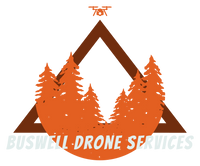Seeing More Than the Eye with a Drone: Comparing Multispectral Bands and Vegetation Indexes.
- Jonathan Buswell
- Aug 27
- 4 min read

When you gaze at a field, forest, or vineyard, you may see just a sea of green vegetation. However, there's a hidden world of light interactions happening that our eyes cannot detect. Plants continuously reflect and absorb light in ways that unveil important details about their health and vitality. Multispectral imaging, especially when deployed via drones with specialized cameras, enables us to capture this hidden information. This helps transform it into practical maps that inform crucial decisions in farming.
In this post, we will uncover the essential bands of light used in agriculture—Red, Green, NIR (Near-Infrared), and Red Edge—and the vegetation indexes generated from them, such as NDVI, GNDVI, and NDRE. This guide serves to introduce you to the 'languages of light' that help farmers understand plant health and improve their agricultural techniques.
The Bands: Building Blocks of Multispectral Imaging

Red
The red band is fundamental in assessing plant activity. Healthy crops absorb substantial red light for photosynthesis, meaning that the more vibrant green plants are, the less red light they reflect. For example, studies show that crops with low red reflectance often face health issues, as evidenced when farmers use red band analysis to identify discrepancies in growth. By measuring the reflected red light from crops, farmers get vital signs of plant vigor, allowing them to tailor their care strategies effectively.
Green
The green band gives fields their vibrant appearance. Leaves predominantly reflect green light, which can tell us about the density and leafiness of a crop. A higher reflection of green light usually indicates a thicker canopy, often leading to increased photosynthesis and higher yields. For instance, a dense vineyard canopy can reflect up to 60% of incoming green light, which correlates with improved grape development and fruit quality.
NIR (Near-Infrared)
NIR light is undetectable to the human eye but incredibly important for evaluating plant health. Healthy plants reflect a significant amount of NIR light—up to 30% more than stressed plants. For example, farmers using NIR technology can identify stressed zones in a cornfield long before visual symptoms appear, allowing them to implement corrective actions. Such early interventions can lead to yield increases of 10% or more by addressing stress efficiently.
Red Edge
The red edge band sits between red and NIR and is effective in detecting early signs of plant stress. For example, research shows using the red edge band enables detection of water stress in crops up to 7 days before visible wilting occurs. This proactive approach helps farmers minimize potential losses by fine-tuning irrigation strategies well in advance.
The Indexes: Turning Bands Into Maps

RGB
RGB imaging produces standard photographs using red, green, and blue bands. While RGB images can help provide an overview for visual scouting, they lack the depth of information available through multispectral data. For instance, farmers may overlook critical health indicators when relying solely on RGB images, which could impact their yield potential.
NDVI (Normalized Difference Vegetation Index)
NDVI is among the most recognized vegetation indexes in agriculture, leveraging the red and NIR bands. This index excels at identifying differences in plant health. By calculating the difference between NIR and red light reflections, NDVI yields a numerical value indicating vegetation vigor. Higher NDVI values, typically above 0.7, indicate healthy plants, allowing farmers to focus attention on areas needing care—potentially increasing yields by over 15%.
GNDVI (Green NDVI)
GNDVI focuses on the green and NIR bands and is instrumental in assessing nitrogen levels in plants. This index is particularly useful during the critical early growth stages. For example, farmers monitoring GNDVI values can adjust fertilization strategies based on data-driven insights, leading to improved nutrient efficacy and crop productivity. A study found that utilizing GNDVI information resulted in 20% better yield consistency in nitrogen-sensitive crops like wheat.
OSAVI (Optimized Soil-Adjusted Vegetation Index)
OSAVI is particularly relevant in areas where bare soil is visible, such as early planting or orchards with gaps. This index makes adjustments for soil brightness, leading to a more accurate assessment of vegetation health in challenging environments. Farmers can effectively monitor crop health, adapting practices to different soil conditions. Using OSAVI correctly can enhance crop yield by as much as 10% in mixed planting scenarios.
NDRE (Normalized Difference Red Edge Index)
NDRE utilizes the red edge and NIR bands to discover stress in plants, making it particularly useful for perennial crops. This index is adept at detecting early stress, allowing farmers to act before visible damage occurs. By incorporating NDRE data, farmers gain a sharper edge in managing crop health. Research shows that proactive management based on NDRE can reduce losses by up to 25% in troubled areas of a field.
Understanding the Hidden World of Data
Multispectral imaging is a game-changing advancement in agriculture, equipping farmers with tools that reveal insights beyond visible observations. By learning about the various light bands—Red, Green, NIR, and Red Edge—and the derived indexes like NDVI, GNDVI, OSAVI, and NDRE, farmers can make informed decisions that boost crop health and yield.
As agriculture evolves, integrating technologies such as drones and multispectral imaging becomes essential for farmers aiming to optimize practices. By leveraging the hidden insights captured through these innovative imaging techniques, farmers can transition from merely observing familiar landscapes to making data-informed decisions that enhance the success of their harvest.
Follow us along on this 10 part series on everything Multispectral. We will break all of this down so you can have a good understanding of how this technology could work for you.





Comments